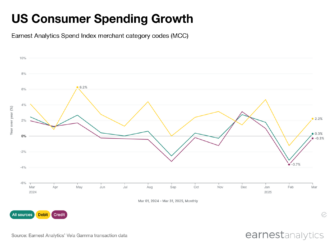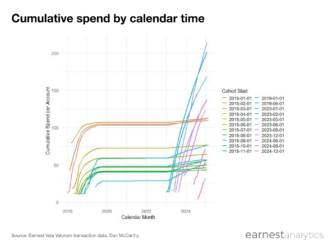Lyft – Uber Competitive Insights
While Lyft may have beaten Uber to IPO first, how are the two companies performing in the battle for market-share and customer loyalty?
We analyzed the credit and debit card records of millions of anonymous U.S. consumers to see how transit and ridesharing spending has changed over time.
Key Takeaways
- Lyft has gained market share nationally in recent years as it has expanded into incumbent Uber markets.
- Earnest has tracked significant gains in ridesharing services in the NYC market, coming largely at the expense of traditional means of transportation.
- Lyft’s cohorts of new riders have exhibited fairly stable trends for member retention and customer lifetime value over the past several years, while Uber’s cohorts of new riders appear to be deteriorating each year.
Market Share & Customer Health Analysis
As observed in the visual below, Lyft has consistently gained share against Uber since 2017.

Zooming in on the NYC market, ridesharing services have become an increasing portion of the transportation market since 2013. Though Uber was the first entrant, Lyft has commanded an increasing share of the market every quarter since 2016. Via and Juno capture modest shares of the market today.

Cohort retention and Customer Lifetime Value (CLTV) are two metrics to compare customer health of Lyft and Uber. Lyft cohorts appear stickier (higher retention) and more valuable (higher CLTV) than Uber’s, although newer cohorts appear to be less valuable for both merchants.













